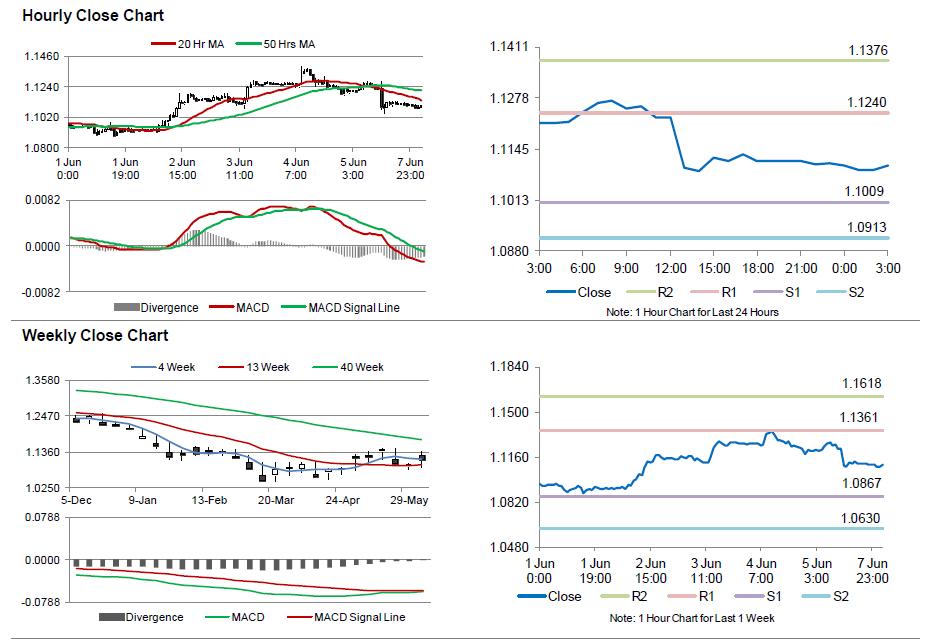On Friday, the EUR declined 0.66% against the USD and closed at 1.1116.
In economic news, German factory orders jumped 1.4% MoM in April, beating market expectations for a 0.5% rise and following an increase of 1.1% registered in March, suggesting that the Euro-zone’s biggest economy is gaining momentum.
The greenback traded on a stronger footing, following stronger than expected non-farm payrolls data in the US.
Data released indicated that the US economy created 280,000 non-farm jobs in May, beating market expectations for a gain of 225,000 jobs. Meanwhile, the unemployment rate of the nation unexpectedly edged up to 5.5% in May, from 5.4% in the previous month.
In other economic news, the consumer credit expanded to $20.54 billion in April, compared to a revised rise of $21.35 billion in the previous month, while markets were expecting it to rise to $16.00 billion.
Separately, the New York Fed President, Bill Dudley, opined that an interest rate hike in the US seems appropriate despite weak growth in the second quarter, given that he expects growth to pick up and has increased confidence that inflation is heading towards the Fed’s 2.0% inflation target.
In the Asian session, at GMT0300, the pair is trading at 1.1104, with the EUR trading 0.11% lower from Friday’s close.
The pair is expected to find support at 1.1009, and a fall through could take it to the next support level of 1.0913. The pair is expected to find its first resistance at 1.1240, and a rise through could take it to the next resistance level of 1.1376.
Trading trends in the Euro today are expected to be determined by Germany’s industrial production as well as trade balance data, scheduled in a few hours.
The currency pair is trading below its 20 Hr and 50 Hr moving averages.

